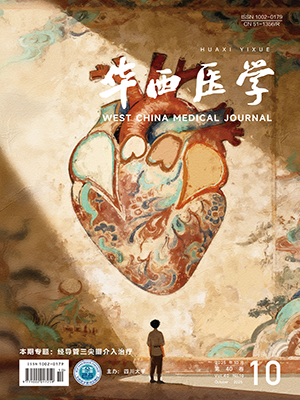| 1. |
Yanai M, Uehara Y, Yagoshi M, et al. Interpretation of the results of blood culture and interventional role by clinical laboratory physicians[J]. Rinsho Byori, 2006, 54(10):1059-1065.
|
| 2. |
Lee CC, Lin WJ, Shih HI, et al. Clinical significance of potential contaminants in blood cultures among patients in a medical center[J]. J Microbiol Immunol Infect, 2007, 40(5):438-444.
|
| 3. |
Kristóf K, Kocsis E, Nagy K. Clinical microbiology of early-onset and late-onset neonatal sepsis, particularly among preterm babies[J]. Acta Microbiol Immunol Hung, 2009, 56(1):21-51.
|
| 4. |
乔宁, 喻华. BacT/Alert240全自动血培养仪临床应用评价[J]. 实用医院临床杂志, 2009, 6(1):61-62.
|
| 5. |
陶传敏, 温晓波, 邝玉, 等. BacT/Alert 240全自动血培养仪的临床应用及评价[J]. 华西医学, 2002, 17(3):366-368.
|
| 6. |
曹慧玲, 李岷, 魏源华, 等. 血培养病原菌分布及污染菌判定的实验室检查[J]. 国际检验医学杂志, 2011, 32(18):2067-2068, 2071.
|
| 7. |
张斗星, 张林, 李宗光, 等. 探讨血培养阳性结果在新生儿血流感染中的意义[J]. 安徽医学, 2012, 33(10):1290-1292.
|
| 8. |
Richter SS, Beekmann SE, Croco JL, et al. Minimizing the workup of blood culture contaminants:implementation and evaluation of a laboratory-based algorithm[J]. J Clin Microbiol, 2002, 40(7):2437-2444.
|
| 9. |
王进, 肖永红. 2006-2007年Mohnarin血流感染病原菌构成及耐药性[J]. 中华医院感染学杂志, 2008, 18(9):1238-1242.
|
| 10. |
徐修礼, 杨春龙, 樊新, 等. 血培养标本中病原菌分布及其耐药性分析[J]. 中华医院感染学杂志, 2008, 18(10):1456-1459.
|
| 11. |
孙宝君, 邹琳. 血培养阳性病原菌分布及变化趋势的临床分析[J]. 解放军医学杂志, 2005, 30(5):430-431.
|
| 12. |
Favre B, Hugonnet S, Correa L, et al. Nosocomial bacteremia:clinical significance of a single blood culture positive for coagulase-negative staphylococci[J]. Infect Control Hosp Epidemiol, 2005, 26(8):697-702.
|
| 13. |
李天娇, 钟海英, 郭红荔, 等. 新生儿血培养出凝固酶阴性葡萄球菌的分析[J]. 中国实验诊断学, 2010, 14(9):1451-1453.
|
| 14. |
王辉, 张悦娴, 谢秀丽, 等. 血培养凝固酶阴性葡萄球菌阳性的临床意义[J]. 中国抗感染化疗杂志, 2001, 1(2):79-82.
|
| 15. |
陈杏春. 血培养对新生儿败血症的诊断价值[J]. 广西医学, 2010, 32(8):970-972.
|
| 16. |
王坚镪, 汤瑾, 庄亦晖, 等. 双套血培养对提高血流感染检出率和鉴别污染的评价[J]. 中国感染与化疗杂志, 2012, 12(6):440-442.
|
| 17. |
毛美丽, 汪瑞忠. 血培养单、双侧采血阳性率比较及病原菌分布和耐药性分析[J]. 检验医学, 2009, 24(12):911-913.
|
| 18. |
顾海彤, 黄艳飞, 孙宇峰, 等. 不同种类微生物血培养阳性报警时间的临床意义探讨[J]. 中国实验诊断学, 2011, 15(11):1882-1884.
|
| 19. |
Roth A, Wiklund AE, Pålsson AS, et al. Reducing blood culture contamination by a simple informational intervention[J]. J Clin Microbiol, 2010, 48(12):4552-4558.
|




